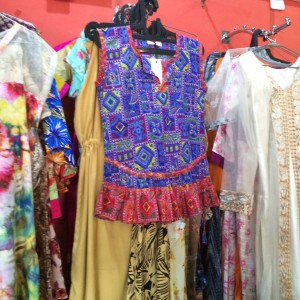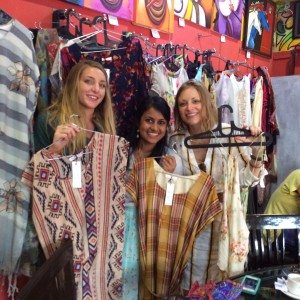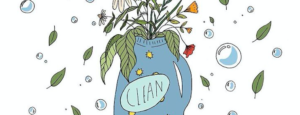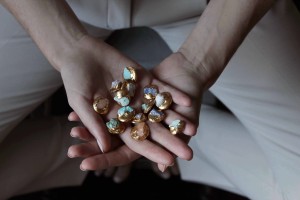India flies under fashion’s radar. On a recent trip, I examined what’s really going on there when it comes to ethical fashion.
It took me a while to recover from my recent trip to India. I was definitely suffering from sensory overload: a non-scientific disorder common among westerners who are thrown into a culture at odds with their routine.
In America we travel for hours, even days, to see a single sight.
In India every square inch is a sight.
In America we shop for clothes on our own agenda.
In India the markets set the the agenda.
Okay, these are sweeping overgeneralizations, but India is a really hard country to put into words! You know how most wanderlusters return from a trip abroad with a newfound sense of understanding? This was not one of those trips. Did I gain knowledge? Absolutely. Did I get out of my comfort zone? Hell yes. Am I glad I went? Most definitely.
Did I come back enlightened? Fat chance.
If anything, I feel even more confused by the cultural contrasts I witnessed. The trip taught me that the more I learn, the less I actually know. I went to India seeking knowledge, perspective – something I couldn’t quite put my finger on. Instead, I came back with a newfound state of inner peace. I’m not going to find answers to my insanely deep questions, and that’s okay. I’ll stick to what I’m confident about for now, like this ethical fashion stuff, and handle life’s puzzling questions when I’m older and wiser. That brings me to fashion in India. The country is rarely talked about in international fashion circles. It keeps its designers reserved to designing traditional attire. So what the heck is going on there? I have two stories to share that reflect global trends through my local experiences. One was planned, the other a work of beautiful spontaneity. Both changed my perspective on fashion in India and the developing world.
The complicated business of ethics
A few months before the trip I was doing research into ethical brands in India and discovered People Tree – a UK-based pioneer of the fair trade model and global ethical fashion powerhouse – had a flagship store in Delhi! I highlighted a visit to the store in bold on our itinerary. We’d only be in the city two days, but I had to drop in and see how the ethical fashion concept worked in an Indian city. My travel crew came with me to People Tree between sights.
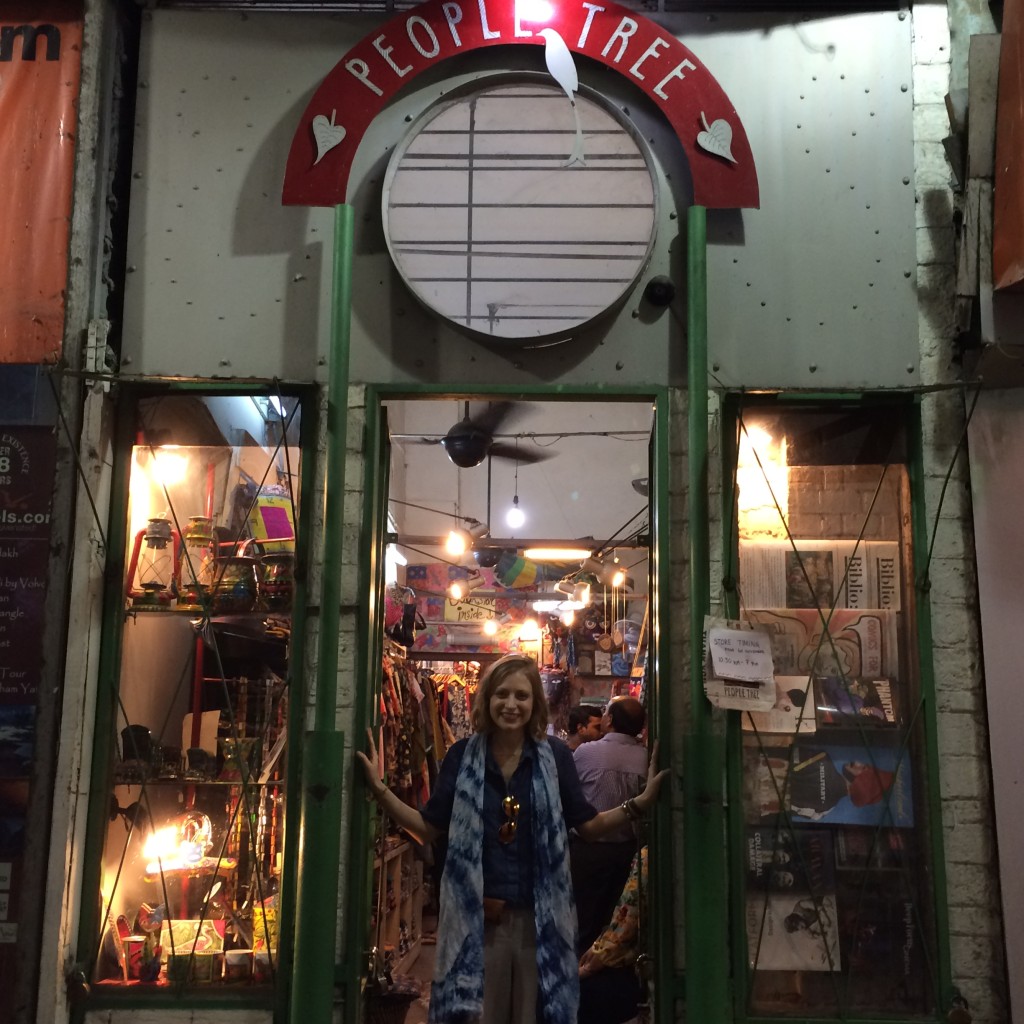
The store was sandwiched between other clothing retailers in a space no bigger than two outstretched arms. The staff was smiley and welcoming. The merchandise was eclectic: graphic tees, aztec printed throws, a wall of beaded earrings, bright knick-knacks. The standard menu of ethical fashion merch. The prices were high if you consider the rupee conversion rate. We were the only customers. I must say, the visit was dismal for many reasons.
First, I went in with the wrong mentality. I’d come halfway across the globe and was expecting a greeting, an acknowledgement or some crazy cathartic release that said “I made it all the way to People Tree, dammit! This is a monumental moment uniting brand and blogger!”
Also, the stuff they were selling seemed to be of better quality than the clothes and jewelry we were offered at the street markets. But it wasn’t THAT much better. At least not enough to make us whip out our rupees. I tried on a few dresses, settled on buying a basic silver necklace as a memory piece, said my thanks, and swiftly departed.
Then I realized something. The People Tree in Delhi is indicative of a larger force at work in India. Ethical fashion doesn’t have a place in India because it’s a romanticized invention of the west. Sure, the goods and artisans are readily accessible, but the business model fails. I challenge you this: why would an Indian shopper choose People Tree when they can get artisan goods miles from their home, or better yet, they can follow western trends by shopping at cheap fast-fashion stores that are infiltrating India’s major cities.
While we were at People Tree, I think the rest of India was 10 miles down the street at a strip mall with India’s first H&M, Zara, Gap and Marks&Spencer.
This is a scary harbinger for the state of fashion in developing countries. While the US is scaling back, thinking smaller, and trying to make up for the sins of its industrial past, ethical fashion is finding a foothold. While India is charging ahead with development, fast-fashion is finding a foothold. Globalization is a complicated beast. Remember that thing I said earlier about learning more but knowing less? This is one of those times.
I don’t gamble, but I’d bet on fast-fashion upping its ante in developing nations. If this pattern isn’t stopped, these countries will follow our same path toward mass consumption.
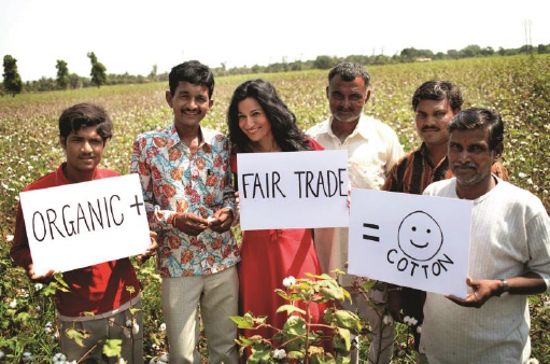
Fashion for advocacy
I’ve written before about the three interest areas in ethical fashion. Generally speaking, these are earth, people and animals. India falters when it comes to earth [fast-fashion isn’t exactly lauded for its low carbon footprint] and animals [contrary to popular belief, Indian reverence for cows does not translate into humane treatment in the leather making sector according to Peta].
India does, however, excel in ethical fashion for its people. Fashion as a vehicle for advocacy works brilliantly.
I saw this traveling through Agra when we stopped for tea after seeing the Taj Mahal. The cafe we stopped in looked fit for a rastafarian poetry slam, but was actually an outpost for survivors of brutal acid attacks and a marketplace for their handmade designs.

Sheroes’ Hangout gave them work, a sense of community, an outlet for their talents, and most importantly, an opportunity to raise awareness for their cause. According to Acid Survivors Trust International there are as many as 1,000 of these brutal attacks on women every year in India.
We sat with them and listened to their stories. They shared stark details about their attacks and recoveries with admirable candor. One woman was assaulted by a gang of 13 men and women in collusion with her husband. She had been through 12 surgeries. We spoke to a mother and daughter who were attacked by an abusive husband and father. They work at Sheroes by day, but go home to the same man every night because India has not enforced harsh enough punishment on perpetrators.
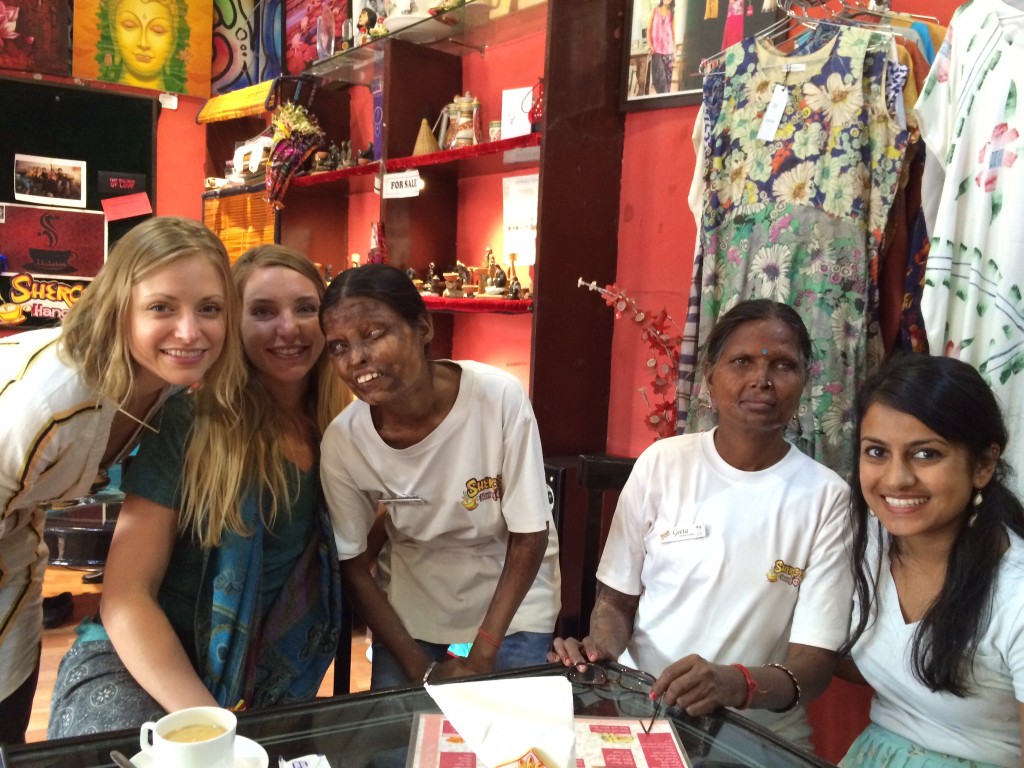
Then, I met Rupa. She’s the resident designer whose creations hang from the walls inside Sheroes. Her handmade blouses and dresses are made wearable for tourists and residents alike. She uses them not only to raise profits, but to give a face to the cause by styling women for national awareness campaigns.
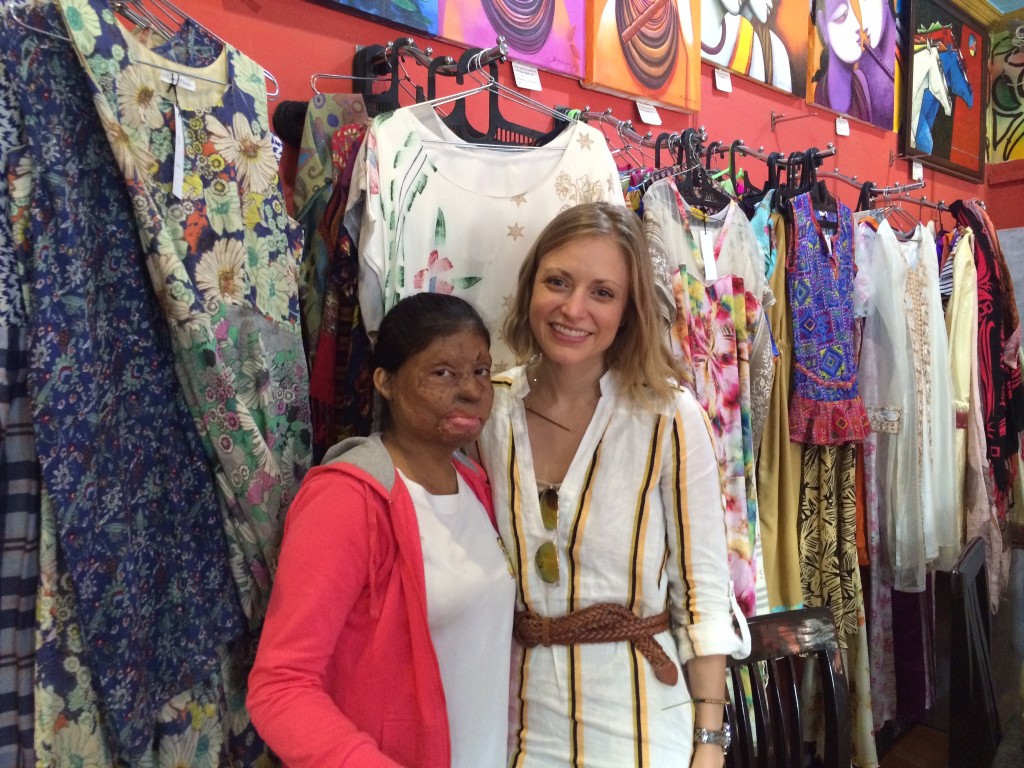
When I came home, I read a HuffPo headline about Laxmi Saa, another acid attack survivor who recently became the face of a prominent fashion brand. It turns out she had modeled for Rupa’s clothing back in 2014 before landing her national gig with Viva N Diva.
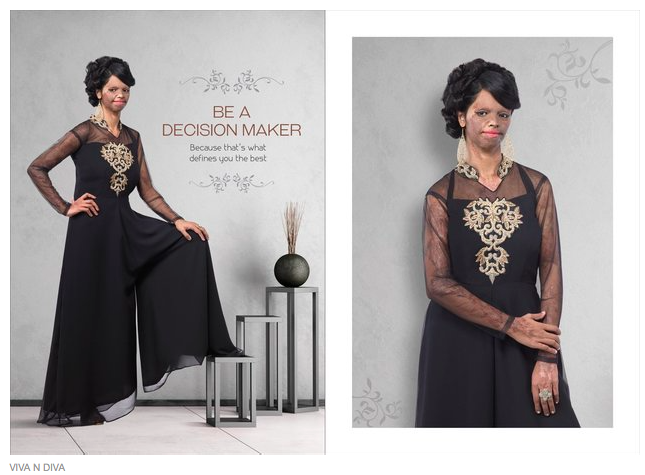
Better yet, Laxmi was paid on par with commercial fashion models for the campaign. How’s that for Indian karma?
There’s still much progress to be made to liberate women from this gruesome fate. But the idea of fashion for advocacy is catching on in India. It’s one trend I hope they keep following.
Footnote:
India originated the concept of fashion for social change. When I visited Ghandi’s ashram, I learned how he used indian textiles and weaving to protest British clothing as part of the independence movement. Read more about it in Clothing for Liberation.
Citation
*http://www.bbc.com/news/world-asia-india-35289545


